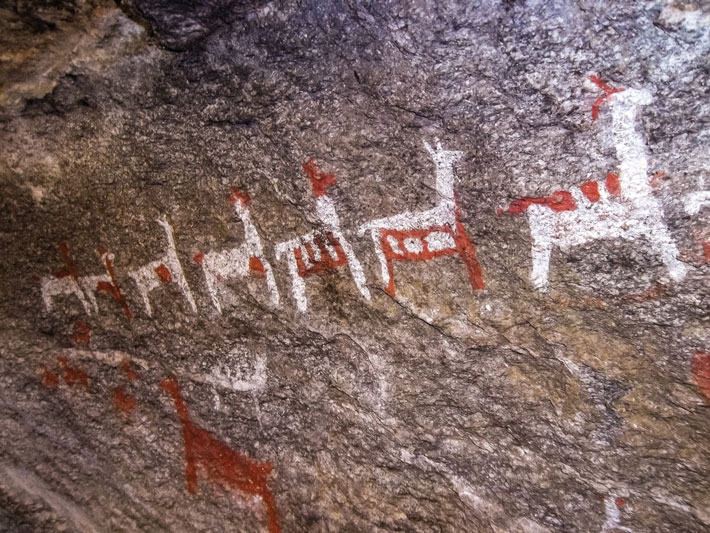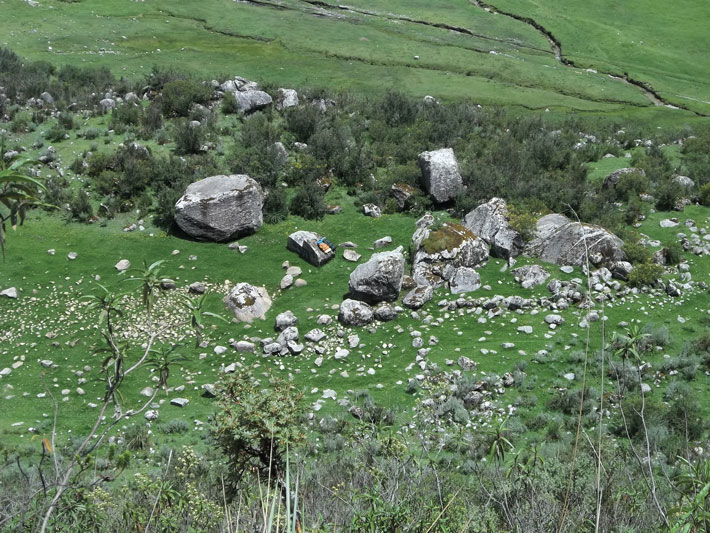
In northern Peru’s Shonquilpampa Valley, pictographs on boulders are offering a glimpse of Andean peoples’ changing relationship to wild camelid species such as guanaco, groups of which were domesticated sometime around 5,000 years ago and became llamas. The earliest images on the boulders were painted using red ocher around 8,000 years ago. They show humans armed with spears and bolas hunting fleeing camelids. The artists depicted hunters and prey to scale. “The art looks very figurative and realistic,” says archaeologist Victor Ponte of the environmental services firm Impact7G, who surveyed the site. “They depicted figures as they saw them in real time.”

Panels on the boulders that are thought to have been produced later show white and red camelids in organized trains being herded by diminutive human figures. “This could represent the time when domestication occurred,” says Ponte. He notes that the valley is filled with glacial lakes, where Andean peoples believed camelids emerged under the mountain god’s protection to graze on the valley’s abundant pastures. “This Andean supernatural concept persists over time,” says Ponte. “The art had to be located in these unique locations in conjunction with these natural elements.”
